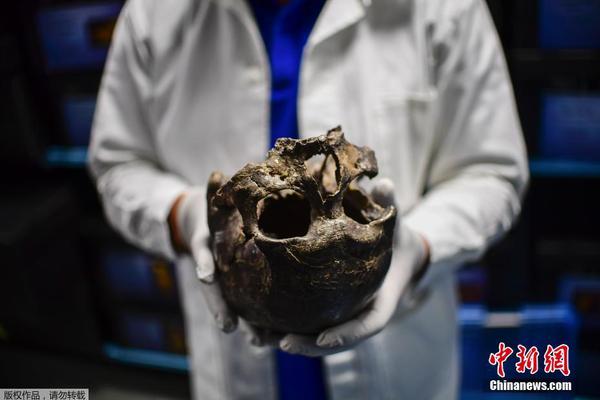【gutting and rebuilding a travel trailer cost】New Study Confirms High Inter-Observer Agreement Using the WATS3D Biopsy for Evaluation of Esophageal Pre-Cancer
SUFFERN,gutting and rebuilding a travel trailer cost NY--(Marketwired - May 4, 2014) - CDx Diagnostics today announced results from a study showing high inter-observer agreement rates in the diagnosis of Barrett's esophagus and dysplasia among pathologists analyzing samples from the WATS
3D

biopsy. The study showed that WATS

3D

computer-assisted pathology analysis results in significantly better pathologist inter-observer agreement rates compared to standard manual microscopic histopathology assessment of Barrett's esophagus and dysplasia. The results were presented during an oral session at Digestive Disease Week® 2014 (DDW) on May 3, 2014 in Chicago.
"This study has potentially important implications for clinical care because we know that histopathologic diagnosis of Barrett's esophagus-associated dysplasia has traditionally suffered from poor inter-observer agreement, even among experienced GI pathologists," said lead author Prashanth Vennalaganti, MD of the Division of Gastroenterology and Hepatology, University of Kansas Medical Center, Kansas City, MO. "These high kappa values for the WATS
3D
biopsy provide powerful validation for the clinical value of this procedure. Providing a more accurate, consistent assessment of esophageal pre-cancer will allow gastroenterologists to make more confident decisions about care strategies for their patients."
The WATS
3D
biopsy collects a wide area, disaggregated tissue specimen of the entire thickness of the suspect epithelium. This unique tissue specimen is then subjected to specialized, computer-assisted 3-dimensional analysis which selects the 200 "highest ranking" cells from each patient for presentation to a pathologist. The high sensitivity of WATS
3D
is due to the large tissue area sampled, and the proprietary computer imaging system that is based on an algorithm developed as part of the U.S. Strategic Defense Initiative missile defense program.
In standard manual microscopic inspection of a biopsy specimen the first cells evaluated by the pathologist from each slide are selected randomly. An initial impression of the degree of pathology on the case can then be formed based on these randomly selected cells and this can lead to "confirmation bias" against modifying this initial impression during the remainder of the pathologist's analysis.
In contrast, during WATS
3D
analysis the pathologist's initial impression of the case is not based on evaluation of a few randomly selected cells but on a subset of 200 mathematically pre-selected cells which are rank ordered for potential abnormality, eliminating "confirmation bias" as a source of inter-observer variability.
Story continues
In the study presented at DDW, 149 WATS
3D
slides with varying degrees of Barrett's esophagus and dysplasia were randomly selected and distributed to four pathologists trained in the analysis of WATS
3D
samples. Each slide was evaluated in a blinded fashion and graded as non-dysplastic, low-grade dysplasia (LGD) or high-grade dysplasia/esophageal adenocarcinoma (HGD/EAC). The agreement rates, or kappa values, were graded based on Landis and Koch scale (kappa values: 0.41 to 0.60 indicate moderate agreement, 0.61 to 0.80 indicate substantial agreement, and above 0.80 indicate nearly perfect agreement).
The overall mean kappa value for all three diagnoses for the 4 observers was calculated at 0.86 (95% CI 0.75-0.97). The kappa values (95% CI) for HGD/EAC, IND/LGD and no dysplasia were 0.95 (0.88-0.99), 0.74 (0.61-0.85) and 0.88 (0.81-0.94) respectively. The authors concluded that the diagnosis of Barrett's esophagus and associated dysplasia using WATS
3D
has very high inter-observer agreement and represents a significant improvement over current histopathological assessment.
"The excellent inter-observer agreement of pathologists utilizing the WATS
3D
system found in this study could potentially be due to the computer program that flags the most suspicious cells from each patient for consistent presentation to each pathologist," said Prateek Sharma, MD of the University of Kansas Medical Center and the senior author of the study. "This computer-assisted analysis system thus addresses the possibility that the pathologist may be susceptible to confirmation bias in that they may make their diagnosis based on review of randomly selected fields."
In addition to the inter-observer agreement study, an ASGE/AGA Joint Presidential Plenary presentation at DDW will highlight findings from the largest WATS
3D
clinical study conducted to date.
Su
nday, May 4th, beginning at 1:30 PM CDT:
"Esophageal Brush Biopsy with Computer-Assisted Tissue Analysis Increases Detection of Barrett's Esophagus and Dysplasia in a Multi-site Community-Based Setting."
DDW attendees can visit
booth # 2711
to learn more about WATS
3D
.
About CDx Diagnostics and the WATS
3D
Biopsy
CDx Diagnostics' mission is to provide doctors with the most powerful diagnostic technology to help prevent cancer before it can start.
CDx Diagnostics' WATS
3D
biopsy addresses the sampling error inherent in random forceps biopsy testing of the esophagus. In just a few minutes, gastroenterologists can easily obtain a wide area, full-thickness transepithelial tissue sample for computer-assisted 3D laboratory analysis. In clinical trials, adjunctive use of CDx Diagnostics' WATS
3D
biopsy significantly increased the detection rate of both Barrett's esophagus and esophageal dysplasia. The high sensitivity of WATS
3D
is due to the large tissue area sampled, and the proprietary 3-Dimensionial computer imaging system that is based on an algorithm developed as part of the U.S. Strategic Defense Initiative missile defense program. To learn more about WATS
3D
, visit
www.cdxdiagnostics.com
.
About Digestive Disease Week®
Digestive Disease Week® (DDW®) is the largest international gathering of physicians, researchers and academics in the fields of gastroenterology, hepatology, endoscopy and gastrointestinal surgery. Jointly sponsored by the American Association for the Study of Liver Diseases (AASLD), the American Gastroenterological Association (AGA) Institute, the American Society for Gastrointestinal Endoscopy (ASGE) and the Society for Surgery of the Alimentary Tract (SSAT), DDW takes place May 3 - 6, 2014, at McCormick Place, Chicago, IL. The meeting showcases more than 5,000 abstracts and hundreds of lectures on the latest advances in GI research, medicine and technology. More information can be found at
www.ddw.org
.
View comments










